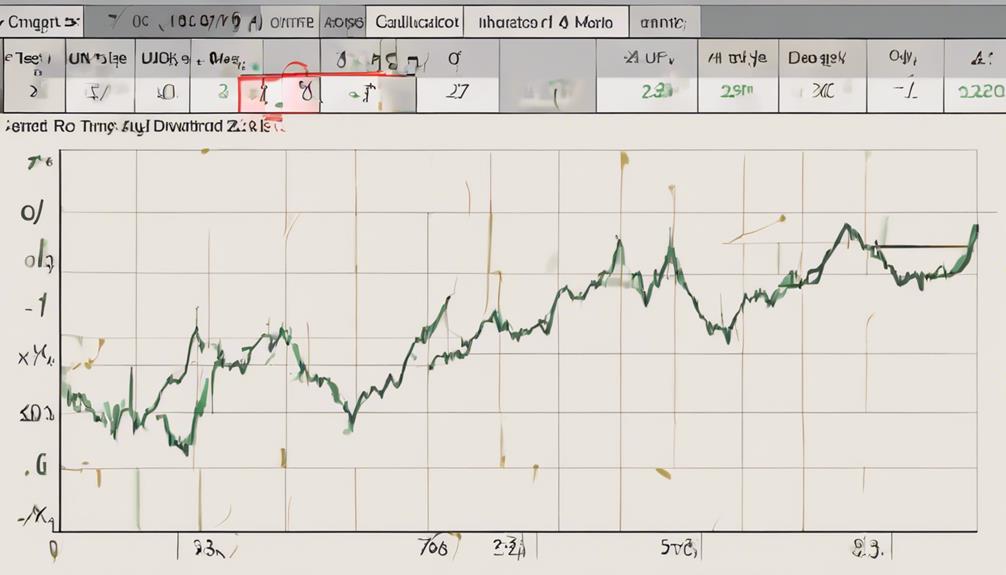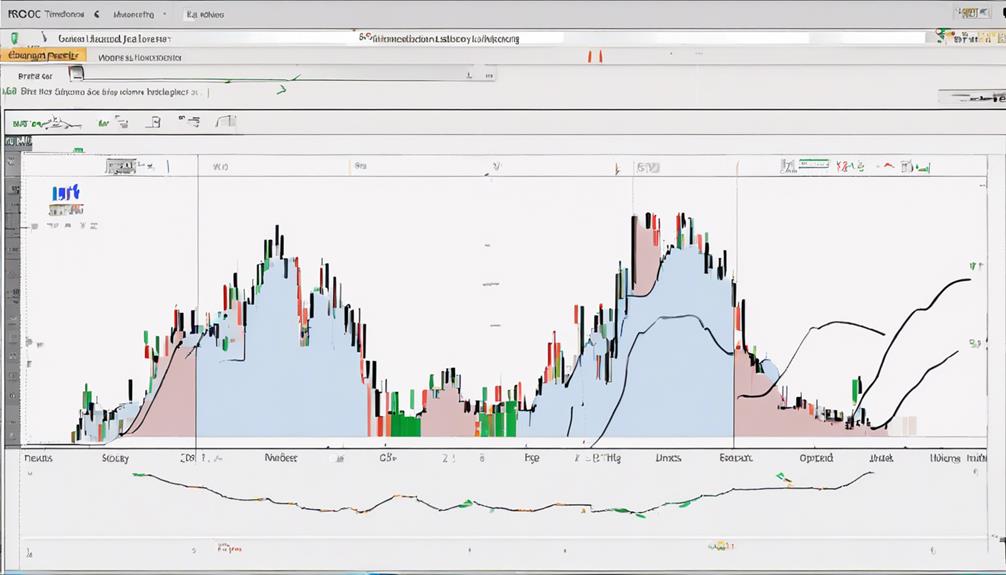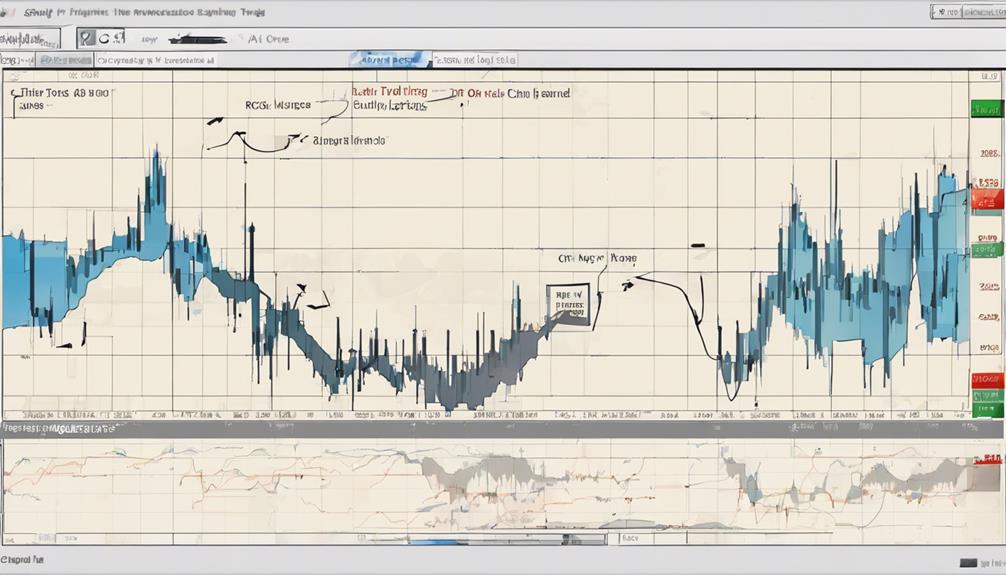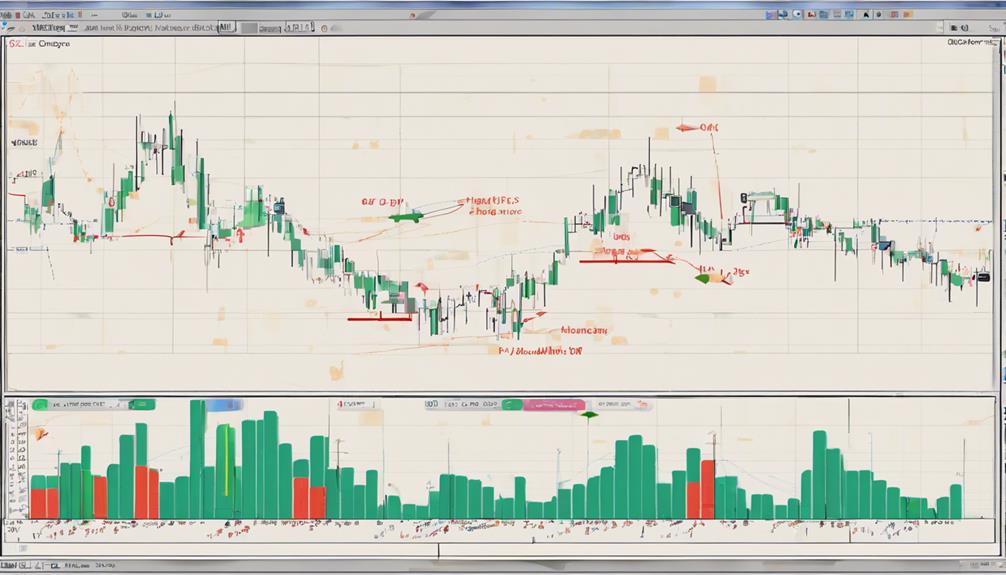The ROC indicator plays a pivotal role in equity trading by providing traders with crucial insights into market dynamics and price movements. Its unique ability to gauge the velocity of price changes offers a valuable perspective on market momentum and trend strength.
Understanding how the ROC indicator functions and its implications for trading decisions can significantly impact one's success in navigating the complexities of the financial markets. As traders strive to optimize their strategies and capitalize on opportunities, delving deeper into the significance of the ROC indicator becomes imperative for staying ahead in the ever-evolving landscape of equity trading.
Importance of ROC Indicator
The significance of the ROC indicator in equity trading lies in its ability to pinpoint changes in momentum and potential trend reversals, guiding traders towards informed decision-making based on the speed of price movements over a specific timeframe.
As a crucial component of technical analysis tools, the Price Rate of Change (ROC) provides traders with valuable insights into market sentiment. Positive ROC values indicate a bullish sentiment, signaling strength and potential upward trends in equity prices. Conversely, negative ROC values suggest bearish sentiment, highlighting potential weaknesses and downward trends in the market.
Traders rely on the ROC indicator to identify overbought and oversold conditions, assisting them in determining optimal entry and exit points for their trades. By incorporating ROC into their analysis, traders can better assess the momentum and direction of price movements, enhancing their ability to make well-informed trading decisions in the dynamic equity market.
ROC Calculation and Interpretation

Analyzing stock price movement through the Rate of Change (ROC) indicator involves comparing the current close price with the close price from a specific number of periods ago to determine the rate of change. The ROC formula, a fundamental tool in Technical Analysis, calculates the percentage change in the current price over a specified number of periods. Commonly used periods for ROC calculations include 14, 9, 25, and 200, offering traders different perspectives on price momentum.
Interpreting the ROC values is crucial for traders. ROC values above zero suggest bullish momentum, indicating an increase in the current price compared to the past. Conversely, values below zero signal bearish sentiment, signifying a decrease in the current price relative to the past. The zero line on the ROC chart acts as a centerline, with no predefined overbought or oversold levels. Traders often look at historical ROC extremes to identify potential overbought or oversold conditions for making trading decisions based on price movements.
ROC Indicator Vs. Momentum Indicator

Comparing the ROC indicator with the Momentum indicator provides traders with distinctive perspectives on analyzing price movements in equity trading. The Rate of Change (ROC) indicator measures the percentage change in price between the current period and a specified past period, offering insights into the magnitude of price changes relative to historical data.
In contrast, the Momentum indicator focuses on the absolute value of price changes without considering the percentage aspect. ROC is known for its sensitivity to price movements, reflecting the percentage change and allowing for direct comparisons across different securities.
On the other hand, the Momentum indicator's absolute nature makes it less directly comparable between securities. Both indicators play a crucial role in momentum analysis for trading strategies, with ROC emphasizing the relative percentage change and Momentum offering a perspective on price strength.
Understanding the differences between ROC and Momentum indicators is essential for traders looking to make informed decisions based on comprehensive price movement analysis.
Integrating ROC in Trading Strategies

How can the integration of the ROC indicator enhance the effectiveness of trading strategies in equity markets?
The Rate of Change (ROC) indicator plays a crucial role in improving trading strategies by providing valuable insights into price momentum and potential trend reversals. When integrated into trading strategies, ROC can significantly benefit traders in making informed decisions at key entry/exit points.
Here are four ways in which integrating ROC can enhance trading strategies:
- Identifying Overbought/Oversold Conditions: ROC helps in identifying overbought and oversold levels, aiding traders in determining optimal times to enter or exit trades.
- Confirming Trade Signals: Combining ROC with other technical analysis tools can validate trade signals, enhancing the accuracy of trading decisions.
- Enhancing Decision-Making Processes: ROC offers clear signals on price momentum, enabling traders to better understand market trends and make strategic decisions.
- Timely Trade Executions: By detecting trend reversals, ROC assists in executing trades at the right time, maximizing profitability and minimizing risks.
ROC Indicator in Technical Analysis

The ROC indicator in technical analysis serves as a pivotal tool for measuring the speed of price changes in securities, providing valuable insights into market momentum and potential trends. Positive ROC values indicate bullish trends, suggesting an upward momentum in prices, while negative ROC values signal bearish trends, indicating a downward momentum.
Calculated as the percentage change between the current price and a price n periods ago, ROC helps traders identify overbought or oversold conditions in the market. By analyzing the ROC values, traders can make more informed decisions regarding when to enter or exit positions.
This momentum indicator is crucial in technical analysis as it aids in recognizing shifts in market sentiment and predicting potential price movements. Whether assessing bullish or bearish trends, the ROC indicator is an essential tool for traders looking to navigate the complexities of equity markets and optimize their trading strategies.
How does the use of ROC indicator differ in equity trading compared to cryptocurrency trading?
In equity trading, the use of ROC indicator is based on historical price data to identify overbought and oversold conditions. However, in cryptocurrency trading, the ROC indicator is applied to the price changes of digital assets, reflecting the volatile nature of the market. The roc indicator in cryptocurrency trading provides insights into the rapid price movements.
Frequently Asked Questions
What Is the Purpose of the ROC Indicator?
The purpose of the ROC indicator is to measure the rate of price change in equities over a specified timeframe. It serves as a momentum oscillator, aiding traders in identifying market conditions like overbought or oversold levels.
Is ROC a Good Indicator?
ROC is a valuable indicator in equity trading due to its ability to measure price momentum, identify overbought/oversold conditions, confirm trends, and signal reversals. Traders often integrate ROC with other tools to enhance trading strategies and decision-making.
Is ROC a Leading Indicator?
The ROC indicator is a lagging indicator that tracks price movements, not a leading indicator. It calculates percentage changes in price over specific periods, aiding traders in confirming trends or identifying potential reversals based on historical data.
How Would You Use ROC to Predict the Stock Price Movement?
To predict stock price movement using ROC, observe the indicator's shifts from positive to negative values. A rising ROC suggests increasing momentum, potentially signaling a bullish trend. Conversely, a falling ROC may indicate weakening momentum, hinting at a bearish trend ahead.
Conclusion
In conclusion, the Rate of Change (ROC) indicator plays a crucial role in equity trading by measuring price changes and providing insights into market momentum and trends. By comparing current prices to past closing prices, traders can identify overbought or oversold conditions, confirm trend directions, and anticipate potential reversals.
An interesting statistic to note is that studies have shown that incorporating the ROC indicator into trading strategies can lead to a significant increase in profitability and overall trading success.


